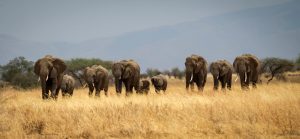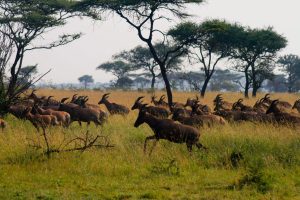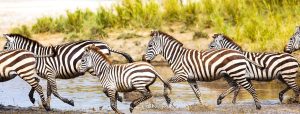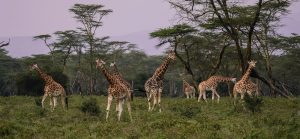Capturing the Best Shots: A Guide to Tanzania Photographic Safaris
Are you a photography enthusiast looking for the ultimate adventure to capture stunning wildlife shots? Look no further than Tanzania, a country renowned for its diverse and rich wildlife. A photographic safari in Tanzania offers the perfect opportunity to capture unique and breathtaking images of the majestic big cats, elephants, giraffes, and more. But planning a photographic safari can be daunting, especially for first-timers. That’s where this guide comes in handy. We’ll take you through everything you need to know about planning a photographic safari in Tanzania, from the best time to go, the ideal locations to visit to the equipment you need to capture the best shots. Whether you’re a seasoned photographer or a beginner, this guide will equip you with the knowledge and skills needed to capture the best shots in one of Africa’s most iconic wildlife destinations. So, grab your camera, pack your bags, and let’s explore Tanzania’s wild beauty through the lens of your camera! Choose a photographic package or Tailor-make safaris with espiedsafaris.com.
What to expect on a Tanzania Photographic Safari
A Tanzania photographic safari is a unique experience that offers a chance to capture some of the most spectacular wildlife images. During the safari, you’ll have the opportunity to photograph some of the most iconic animals in Africa, such as lions, leopards, cheetahs, elephants, and giraffes. The safari is designed to give you ample time to take photos and observe the animals in their natural habitats.
Tanzania’s national parks are some of the best places to go on a photographic safari. They are home to an abundance of wildlife, including the Serengeti National Park, Ngorongoro Crater, Lake Manyara National Park, and Tarangire National Park. Each park offers a unique experience and a chance to capture different types of animals and landscapes.
Most photographic safaris in Tanzania are led by professional guides who are knowledgeable about the wildlife and the best places to take photos. They are also experienced in navigating the parks and ensuring your safety while on the safari.
Best time to go on a Tanzania Photographic Safari
The best time to go on a photographic safari in Tanzania is during the dry season, which usually runs from June to October. This is the time when the animals congregate around the water sources, making it easier to spot them and take photos. The dry season also offers clear skies and good lighting for photography.
The wet season, which runs from November to May, is also a good time to go on a photographic safari in Tanzania. During this time, the parks are lush and green, providing a beautiful backdrop for your photos. However, the wet season can also be challenging, with muddy roads and limited visibility due to the foliage.
Choosing the right camera equipment for a Tanzania Photographic Safari
Choosing the right camera equipment is crucial for capturing stunning wildlife photographs in Tanzania. A good camera with a high shutter speed and a telephoto lens is essential for capturing sharp and clear images of the animals. A tripod is also recommended for steady shots.
It’s important to pack spare batteries, memory cards, and cleaning equipment for your camera. The African heat can drain your camera batteries quickly, and you don’t want to miss the perfect shot because your camera has run out of power.
Tips for capturing stunning wildlife photographs in Tanzania
Capturing stunning wildlife photographs in Tanzania requires patience, skill, and a bit of luck. Here are some tips to help you get the best shots:
- – Get up early: The best time to take photos is early in the morning when the animals are most active.
- – Be patient: Wildlife photography requires patience. Wait for the animals to come to you, and be ready to capture the moment when it happens.
- – Use natural light: Avoid using flash as it can startle the animals. Instead, use natural light to capture the true colors of the animals and their surroundings.
- – Get down to their level: Photographing the animals from their eye level can create a more intimate and engaging photo.
- – Focus on the eyes: The eyes are the most important part of any animal photo. Make sure they are in focus and sharp.
Essential skills for wildlife photography in Tanzania
To capture stunning wildlife photographs in Tanzania, you need more than just a good camera and equipment. You also need to have some essential skills, including:
– Knowledge of animal behavior: Understanding the behavior of the animals can help you anticipate their movements and capture the perfect shot.
– Patience: As mentioned earlier, wildlife photography requires patience. You may have to wait for hours to capture the perfect shot.
– Composition: Knowing how to compose your photo can make a huge difference in the final result.
– Awareness of your surroundings: Being aware of your surroundings can help you anticipate changes in lighting and movement of the animals.
The best locations for wildlife photography in Tanzania
Tanzania’s national parks are some of the best places for wildlife photography. Here are some of the best locations to visit:
- – Serengeti National Park: Home to the great migration of wildebeest and zebras, the Serengeti is a prime location for wildlife photography.
- – Ngorongoro Crater: The crater is home to an abundance of wildlife, including the endangered black rhino.
- – Lake Manyara National Park: This park is home to a diverse range of wildlife, including tree-climbing lions and elephants.
- – Tarangire National Park: Known for its large herds of elephants and baobab trees, Tarangire is a great location for wildlife photography.
Accommodation options for Tanzania Photographic Safaris
There are different accommodation options for Tanzania photographic safaris, depending on your budget and preferences.
- – Luxury lodges: These lodges offer the ultimate luxury experience, with spacious rooms, fine dining, and amenities such as swimming pools and spas.
- – Tented camps: Tented camps offer a more rustic experience, with comfortable tents and communal dining areas.
- – Mobile camps: Mobile camps are set up in different locations, depending on where the animals are. They offer a unique and immersive experience.
Guided vs. self-drive Tanzania Photographic Safaris
Guided photographic safaris in Tanzania are led by professional guides who are knowledgeable about the wildlife and the best places to take photos. They are also experienced in navigating the parks and ensuring your safety while on the safari.
Self-drive photographic safaris are also an option, but they require more planning and preparation. You need to rent a car, obtain a permit, and navigate the parks on your own.
Conclusion
Tanzania photographic safaris offer a unique opportunity to capture stunning wildlife photographs in one of Africa’s most iconic wildlife destinations. Planning a photographic safari can be daunting, but with the right knowledge and skills, it can be a rewarding and unforgettable experience. Remember to choose the right camera equipment, be patient, and have fun!







